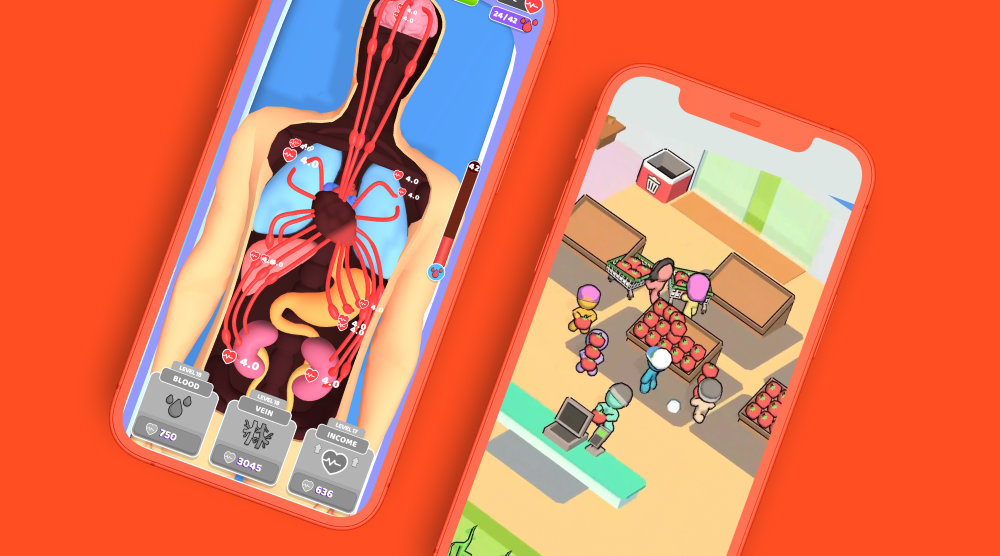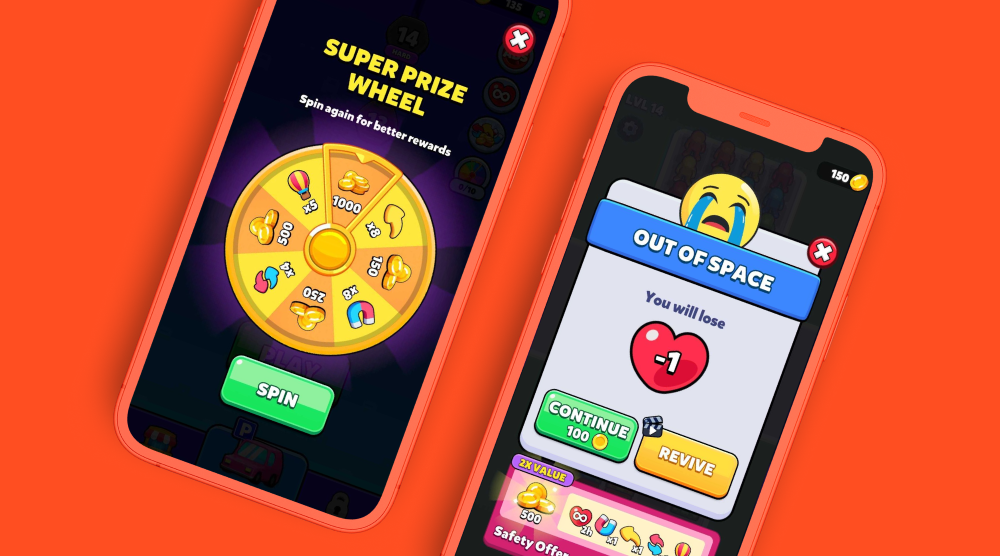The simulation game genre is one of the oldest around, tracing all the way back to 1964 with the text-based adventure, The Sumerian Game. Sixty years on, the genre continues to captivate players with lifelike experiences. On mobile, simulation games lend themselves particularly well to hyper and hybrid-casual games, where high engagement from players fit with the genre's compelling content.
The ability of a simulation game to absorb players hinges on two critical aspects - game design and marketability. Here, we’ve put together a handy guide to help you get them right so you can create the next simulation game hit. Let’s dive in.
WTF is a simulation game
Simulation games are immensely diverse, covering everything from piloting a plane to power washing a trailer park. But at their core they all share one key aspect - immersion. They are all about replicating real-life experiences, tapping into the imagination and curiosity of the player and putting them into whatever role they want to live out.
There is a huge range of possible subgenres, but we’ll limit our review to two of the best archetypes for hyper and hybrid-casual games: idle simulation and DIY games.
Idle simulation games put the emphasis in their gameplay on management rather than activity, they’re focused on the player making decisions rather than completing actions. In them, players are given control of characters who they’ll make decisions for as they move through different stages. Gameplay consists of decision trees where players need to choose between options that will lead them to the next decision. For idle life simulation games, for example, that would include decisions like going to college or not, paying off a debt or buying a house, and joining the mafia or being an upstanding citizen.
Even within the idle subgenre there’s a ton of diversity. Another popular version of the subgenre is the idle tycoon game. Here, players take control of a business and are responsible for its success. An example of this would be My Mini Mart, in which players take on the role of a supermarket owner and are responsible for restocking shelves, selling goods, and expanding their business.
DIY games, in contrast to idle simulation games, put the focus on a specific activity. The point of DIY simulation games is to put the player directly into the role or job they want to fulfill in a literal sense. A game exemplifying this is Click To Life, in which the player is put into the shoes of a surgeon. In the game, players are asked to save patients’ lives by redirecting the veins to the heart and improving blood flow. The concept of the game is not the management of the surgical practice, as it would be in an idle tycoon, but to take the actions a surgeon would take.
We can also see the differences between idle and DIY simulation games in the frame, objects, and conditions used (the building blocks of game design). Idle games are usually framed top down so the player has a bird’s eye view of what they’re managing. DIY games, on the other hand, are often framed in first person to put the player in the (virtual) driver’s seat.
The objects of idle games correspond to what you’ll be managing, for idle life games that’s the NPCs players will be making decisions for. For DIY games the objects will be what is required to complete actions of the character the player will be roleplaying. In Click To Life, that would be the veins you’re redirecting to the heart.
The conditions are probably where the greatest difference between this genre and others is: simulation games are usually not designed with win/lose conditions, just better or worse outcomes. In Gossip Master, for example, if the player makes the wrong choice they’ll lose ‘friends’, but they can’t outright fail the game and reach a game over screen.
The same is true for most DIY games, where the point is to let the player unleash their creativity. There is less winning or losing, just providing the player ways to create what they want - like decorating an iPhone case or putting makeup on a model.
Ideation tips for simulation games
Like with runners and puzzles, trends are one of the best ways to find ideas for simulation games. And one of the best places to stay up to date on the latest trends are the top charts. But, with such a mature market for the genre, being on top of the very latest trends is even more important than in other genres. So, don’t just stick to the top charts but also look at the news in other industries - a trend in the movie or food industry could be the next big thing in simulation games.
A useful trick for finding a good theme for your next simulation game, particularly for tycoon or DIY games, is using broad experiences that most people can relate to. Some examples of past successful themes using this method are hairdresser, makeup artist, and dentist.
Creatives tips and best practices
Simulation games’ creatives, like a lot of hyper and hybrid-casual genre creatives, benefit from simplifying the gameplay and the UI. Simulation games are usually more complex than other mobile games, so there’s a lot of information the user needs to understand in just a few seconds. Simplifying your gameplay elements and UI helps to communicate what the core theme and mechanics of your game are in that tiny window. For more text-based simulation games, that could mean shortening text in chat bubbles or decision moments.
A useful hack for communicating what your game is about in as little time as possible is using voice overs, which have gotten significantly more accessible with AI (a useful service for this is Chat AI). Voice overs enable you to quickly communicate your theme while also minimizing gameplay elements, replacing UI features with short vocal descriptions of the scenario and player inputs. Emojis are also a handy shortcut for showing emotion and intention in your creatives.
Another trick that simulation game creatives share with other genres is engaging users with bright colors. Brighter colors are naturally more appealing and stand out more, making your creatives more memorable and compelling. This is also true for your app icon.
Top current trends to use in your simulation game creatives are emotional hooks like humor, tragedy, and gross out.
Building the foundations of a successful sim
Simulation games have been around for a long time, even on mobile. So, you’re stepping into a mature market with established titles and studios. That means your game’s marketability is even more critical to its success than usual.
Often the best predictor of CPI for simulation games is their theme. Finding a strong theme that is both marketable and compelling should be your first priority when creating your simulation game. We suggest testing marketability even before developing the game - create an ad using your theme and concept to see if your game has got what it takes to compete in the market.
The biggest indicator of your idle game’s success is your economy, especially for idle life and tycoon games. Your in-game economy is what will drive your monetization, motivating players to watch rewarded videos or complete IAP. Since it’s such an important aspect of your game, we recommend skipping the guesswork and instead reference simulation games topping the charts, using their economies as inspiration for your own.
Apart from marketability, your UI is another important element in your game’s success. Make sure that it’s easily readable and intuitive - that means it should be clear what players are seeing when they look at your game’s UI.
Let’s get started
These tips are a great starting point for your next simulation game. Use them, and you’ll skip a ton of the mistakes and time sinks many devs have when creating their games. We can’t wait to see what you come up with.
Let's put these tips to good use
Publish your game with Supersonic



